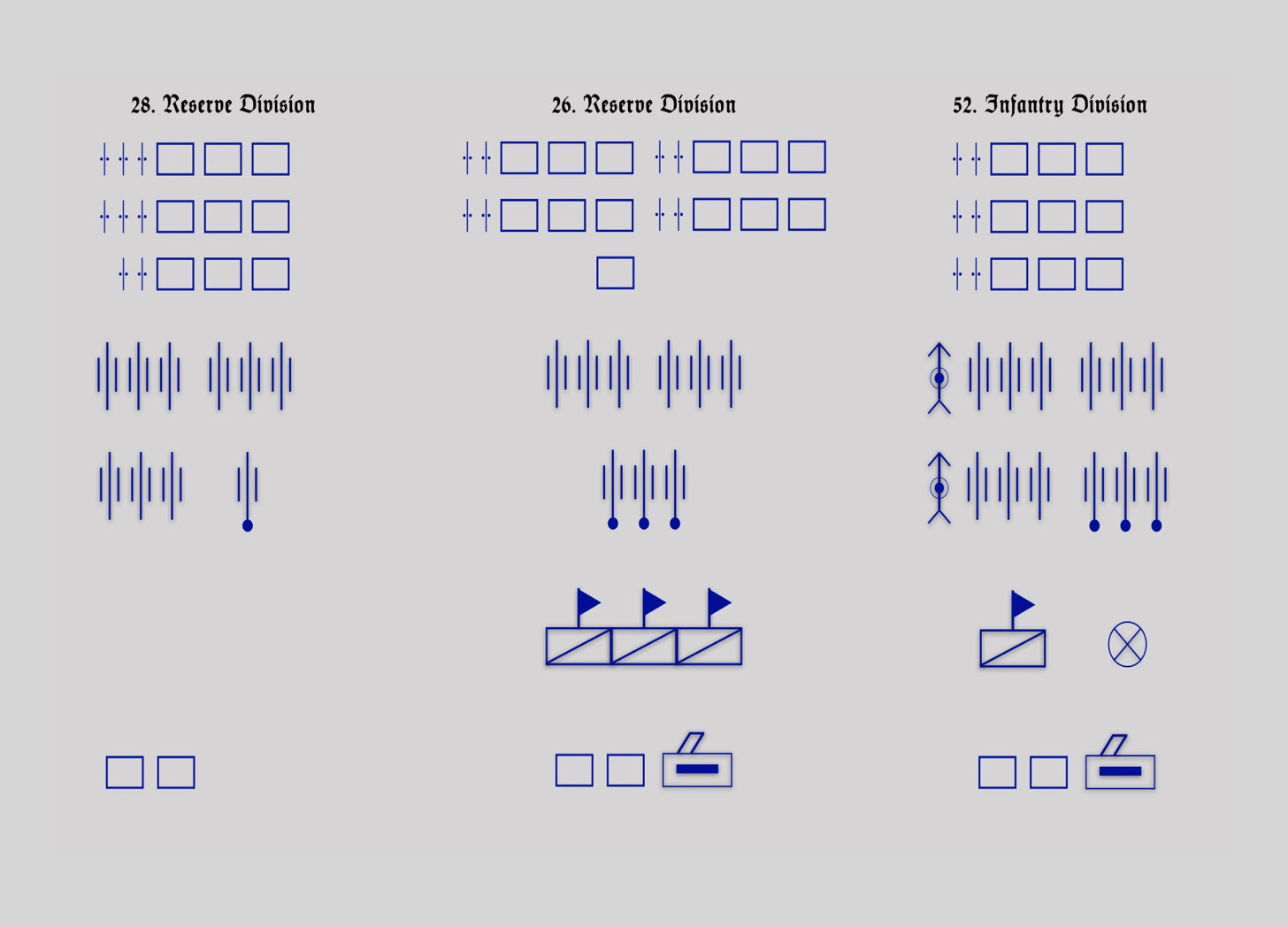At first glance, the divisions that served the Kaiser seem to meet our expectations for machine-age interchangeability. The Kaiser’s servants, after all, expended much effort to ensure standardization. A closer look, however, shows that the organization of German divisions was far from predictable. Even within a single army corps, the XIV Reserve Corps in the summer of 1916 for example, the component divisions might bear little resemblance to one another.
The chief culprit in this crime against regularity was the war itself. In theory, the German infantry divisions that went to war in 1914 had one basic table of organization. In practice, however, though active divisions generally complied with this table, the structures of most reserve divisions fell short of that standard. Variations increased with the rapid mobilization of additional reserve divisions and with later attempts to bring existing reserve divisions up to the active standard. Even the active divisions began to differ significantly from one another as additional changes were imposed by the attempt by the Prussian War Ministry to replace the old-fashioned “square” division with a new “triangular” model.
The ideal infantry division of 1914 received four basic building blocks of each of the three major arms. There were thus four regiments of infantry, four battalions of field artillery, and four squadrons of cavalry. In the new division, however, there were three infantry regiments, three field artillery battalions, and but two cavalry squadrons. (The last-named departure from triangularity was, as might be expected, a function of position warfare.)
The shift from one model of infantry division to another took time to implement. Thus, each of the three divisions of a German army corps of the middle years of the war might be formed on a framework that differed considerably from the structures of its sister formations. Such was the case of the XIV Reserve Corps of the summer of 1916.
Made up largely of units raised in the Grand Duchy of Baden, the XIV Reserve Corps had one completely triangular division and two which, to quote the immortal words of Donnie and Marie, were “a little bit Country, a little bit Rock and Roll.”
Further departures from uniformity resulted from the provision of two foot artillery batteries (armed with 15 cm heavy field howitzers) to one division, the forming of Minenwerfer companies in two divisions, and the lopsided way in which cavalry squadrons were assigned.
Source: Wilhelm Müller-Loebnitz, editor, Die Badener im Weltkrieg, 1914/1918 (Karlsruhe: G. Braun, 1935)
For Further Reading:






